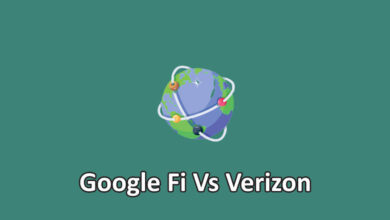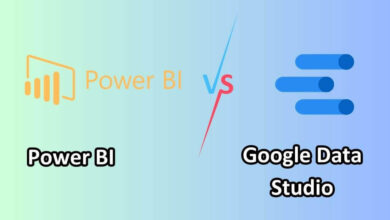Pentium Vs Celeron: Which Wins the Race?
In the ever-evolving landscape of computer processors, two stalwarts have consistently played pivotal roles – Pentium and Celeron. Both developed by Intel, these processor families cater to a wide range of computing needs.
Pentium processors are known for their robust performance, while Celeron processors are often considered more budget-friendly alternatives. Understanding their nuances is crucial for making an informed decision when selecting a processor.
Pentium Vs. Celeron Processor (A Comparison)
| Pentium | Celeron |
|---|---|
| Pentium is a family of x86-compatible processors developed by Intel. It has been a long-standing and versatile series within the Intel processor lineup, known for offering a balance of performance and affordability. | Celeron is another family of processors by Intel, also x86-compatible. It is positioned as a budget-friendly option within the Intel lineup, targeting users with more basic computing requirements. |
| Pentium processor are designed for demanding tasks, superior raw computing power, and multitasking capabilities | Celerons are suited for basic computing needs, lower raw computing power compared to Pentium |
| It has generally higher costs, targeted towards users seeking higher performance. | Celeron processors are more budget-friendly and attractive for users with basic computing requirements |
| Pentium processors are designed for users who need higher performance from their computer systems. | Celeron processors cater to budget-conscious consumers with more straightforward computing requirements. |
| Pentium processors often feature superior integrated graphics for a better visual experience | They may have less advanced integrated graphics compared to Pentium processors |
| Intel Pentium, a classic and cost-effective option, remains the longest-serving family in the Intel Architecture 32-bit (IA-32). | Celeron processors originated from Pentium II architecture but evolved, with recent versions adopting Pentium 4. |
| It boasts higher clock speeds ranging from 1.6 GHz to 2.4 GHz, with the fastest Pentium reaching 3.8 GHz. | It has lower clock speeds often around 1.4 GHz, sharing core architecture with Pentium. |
| Pentium processor has a larger L2 cache memory (e.g., Pentium III with 512 KB) impacting system performance | Celeron has smaller L2 cache memory (e.g., 128 KB) compared to Pentium processors |
What is a Pentium Processor?
The Pentium processor, a longstanding brand in Intel’s arsenal, is a series of microprocessors that epitomize a balance between performance and affordability. It has consistently been a go-to choice for users seeking a reliable and powerful processor for various computing tasks.
With multiple generations and iterations, Pentium processors have evolved to meet the demands of modern applications.
Key Features and Performance Capabilities
- Multitasking Prowess: Pentium processors excel at handling multiple tasks simultaneously, making them ideal for users who engage in intensive multitasking scenarios.
- Clock Speeds: With competitive clock speeds, Pentium processors ensure swift execution of commands, contributing to a responsive computing experience.
- Cache Memory: Generous cache sizes enhance data retrieval, boosting overall system performance and responsiveness.
- Integrated Graphics: Many Pentium processors come equipped with integrated graphics, providing decent visuals without the need for a dedicated graphics card.
- Hyper-Threading Technology: Some Pentium models feature Hyper-Threading, enabling improved parallel processing and faster task execution.
Pentium processors, with their robust features, cater to a broad spectrum of users, from casual home users to professionals requiring reliable performance.
What is a Celeron Processor?
The Celeron processor, another creation from Intel, is designed with cost-effectiveness in mind, offering a budget-friendly option without compromising essential performance aspects. Aimed at everyday computing tasks,
Celeron processors strike a balance between affordability and functionality, making them accessible to a wide range of users.
Characteristics and Performance Specifications
- Entry-Level Performance: Celeron processors deliver satisfactory performance for routine computing tasks, making them suitable for everyday users.
- Economical Pricing: Positioned as budget-friendly options, Celeron processors are an excellent choice for users seeking cost-effective computing solutions.
- Energy Efficiency: Celeron processors are known for their energy-efficient design, contributing to lower power consumption and reduced heat generation.
- Integrated Graphics: Like Pentium, Celeron processors often come with integrated graphics, providing a decent visual experience for general use.
- Decent Clock Speeds: While not as high as some premium processors, Celeron’s clock speeds are sufficient for everyday computing needs, striking a balance between performance and cost.
Celeron processors find their niche among users who prioritize cost savings without sacrificing essential computing capabilities.
Key Differences Between Pentium and Celeron
- Price Point: Celeron processors are generally more budget-friendly than Pentium, making them an attractive option for users with basic computing needs.
- Graphics Performance: Pentium processors often feature superior integrated graphics compared to Celeron, offering a better visual experience for users not using dedicated graphics cards.
- Cache Sizes: Pentium processors tend to have larger cache sizes, contributing to faster data retrieval and improved overall system responsiveness compared to Celeron.
- Clock Speed Disparities: Celeron processors, while sharing core architecture with Pentium, tend to have lower clock speeds, often around 1.4 GHz. In contrast, Pentium processors boast higher clock speeds ranging from 1.6 GHz to 2.4 GHz, with the fastest Pentium reaching 3.8 GHz.
- Cache Memory Dissection: Celeron processors beyond the 300 A model include Level 1 and Level 2 cache on the microchip. However, they generally feature less cache memory (128 KB) compared to Pentium 4 chips. Pentium processors, such as Pentium III, come with larger 512 KB L2 cache memory, impacting overall system performance.
Specialized Use Cases
Pentium Processors for Specific Applications
Pentium processors find their forte in applications demanding higher processing power, such as content creation, video editing, and gaming. Their ability to handle resource-intensive tasks makes them suitable for professionals and enthusiasts seeking a reliable computing experience.
Celeron Processors in Niche Scenarios
Celeron processors, tailored for budget-conscious users, excel in everyday computing tasks like web browsing, document editing, and light entertainment. While not suitable for resource-intensive applications, Celeron processors provide a cost-effective solution for basic computing needs.
Tailoring Choices Based on Individual Computing Needs
Choosing between Pentium and Celeron ultimately depends on individual computing needs. For power users or those engaging in resource-intensive tasks, a Pentium processor is the preferred choice. On the other hand, users with basic computing needs or tight budget constraints may find Celeron processors more aligned with their requirements.
Future Trends and Upcoming Releases
Anticipated Developments in Pentium Series
The Pentium series is expected to continue evolving, incorporating advancements in processing technology, increased core counts, and improved integrated graphics. Future Pentium processors may target a broader audience, bridging the gap between mid-range and high-end performance.
Expectations for New Celeron Processor Releases
Upcoming Celeron processors are likely to focus on enhancing efficiency and performance within the budget-friendly segment. Continued improvements in power efficiency, clock speeds, and integrated graphics are expected, catering to users seeking economical solutions without compromising essential computing capabilities.
Technological Advancements Shaping the Future of these Processors
Both Pentium and Celeron processors are poised to benefit from ongoing technological advancements. These may include improvements in semiconductor manufacturing processes, leading to increased efficiency, reduced power consumption, and enhanced overall performance.
Integration of emerging technologies like AI may also play a role in shaping the future capabilities of these processors.
Conclusion
In conclusion, Pentium and Celeron processors each have their strengths and cater to different segments of users. Pentium stands out with higher performance levels, making it suitable for demanding applications, while Celeron excels in providing cost-effective solutions for everyday computing needs.
When selecting a processor, it’s essential to align your choice with your specific requirements. If performance is paramount and budget permits, a Pentium processor offers a well-rounded solution. For those prioritizing budget without compromising essential functionality, Celeron processors provide a cost-effective entry point.



